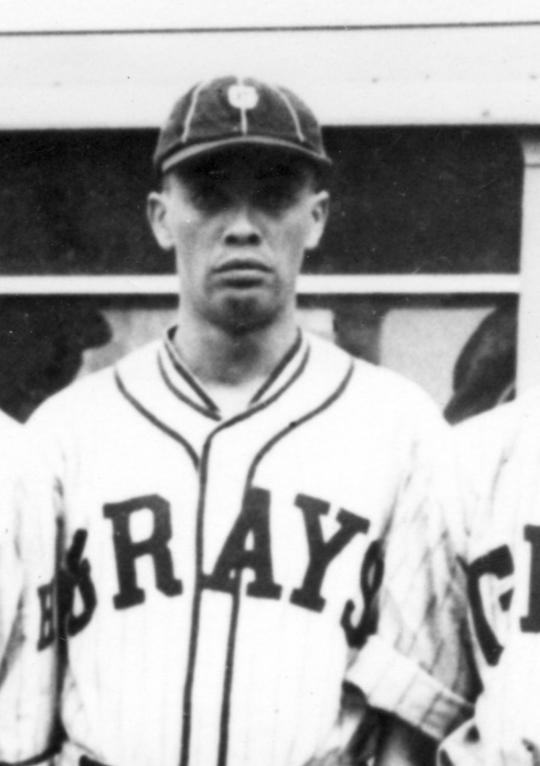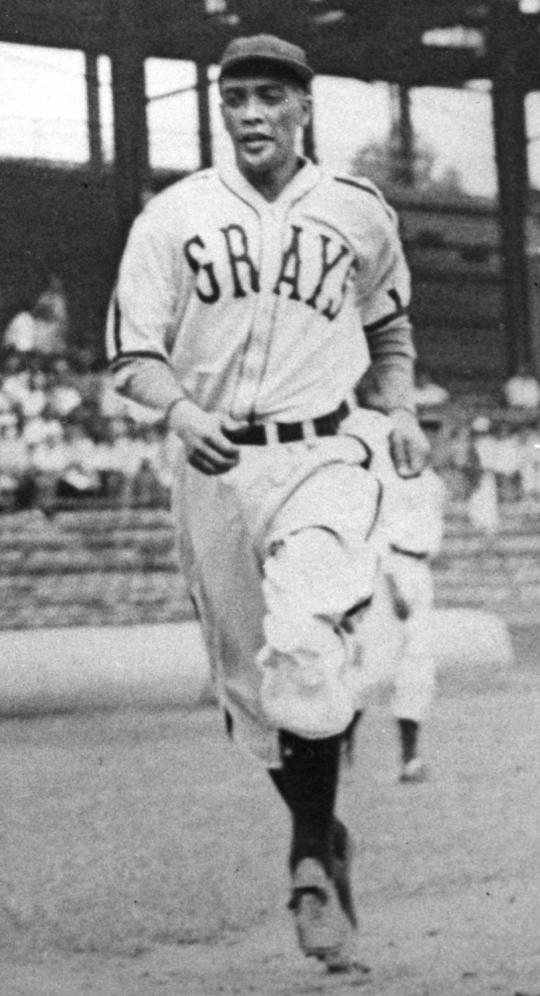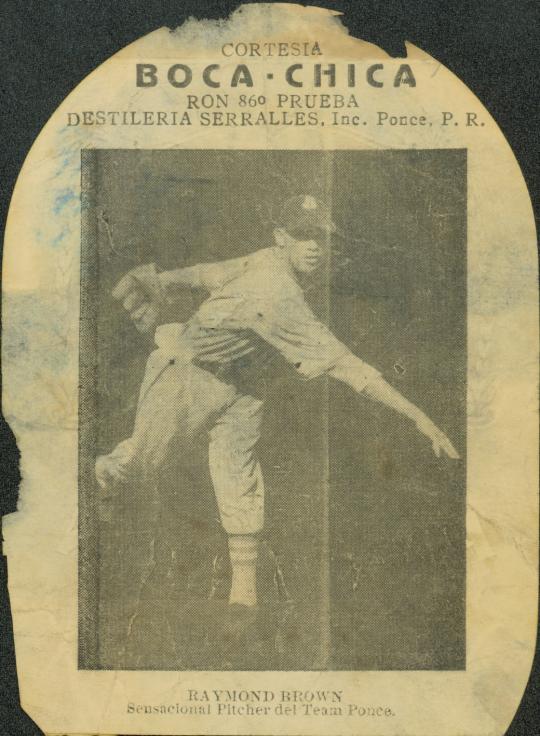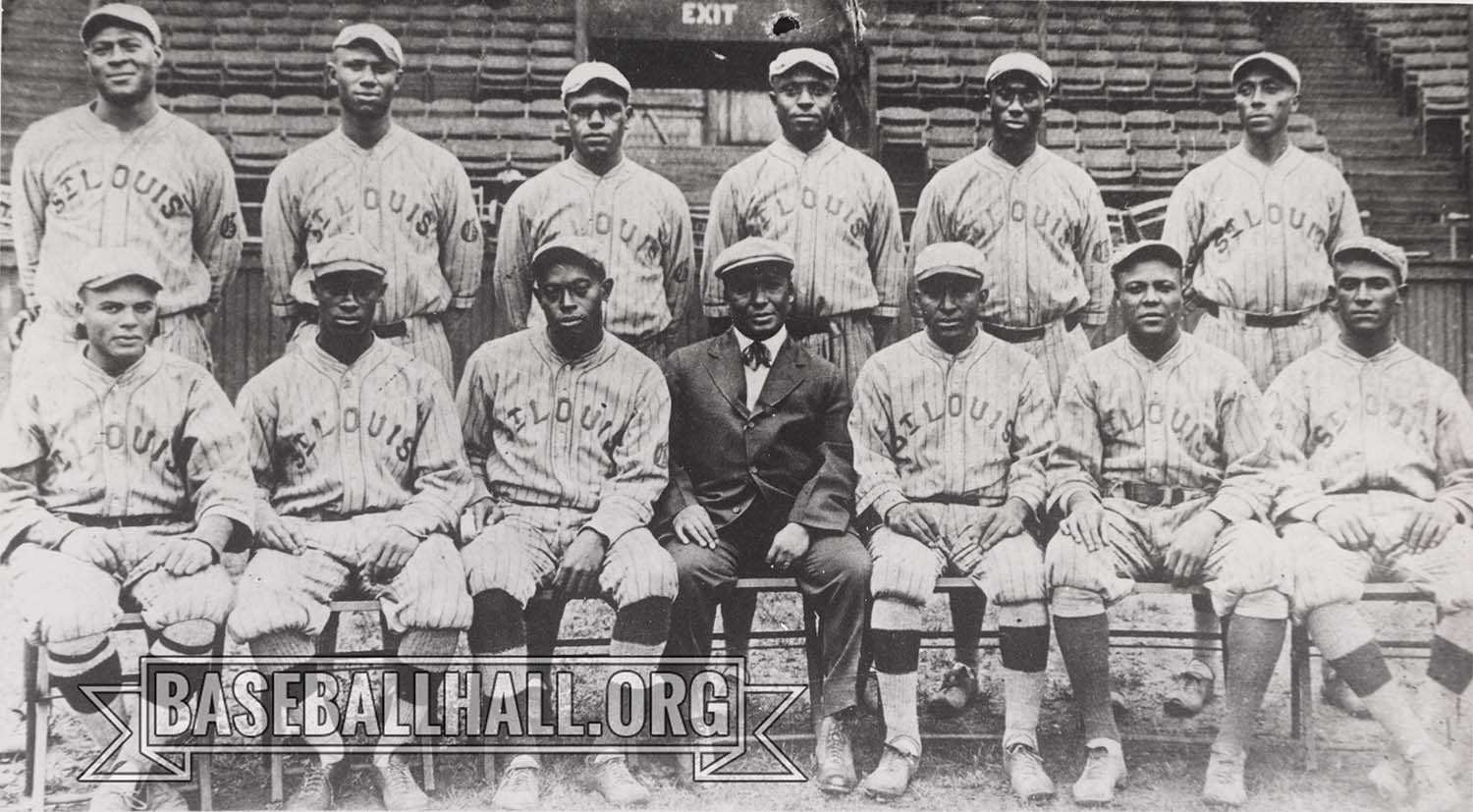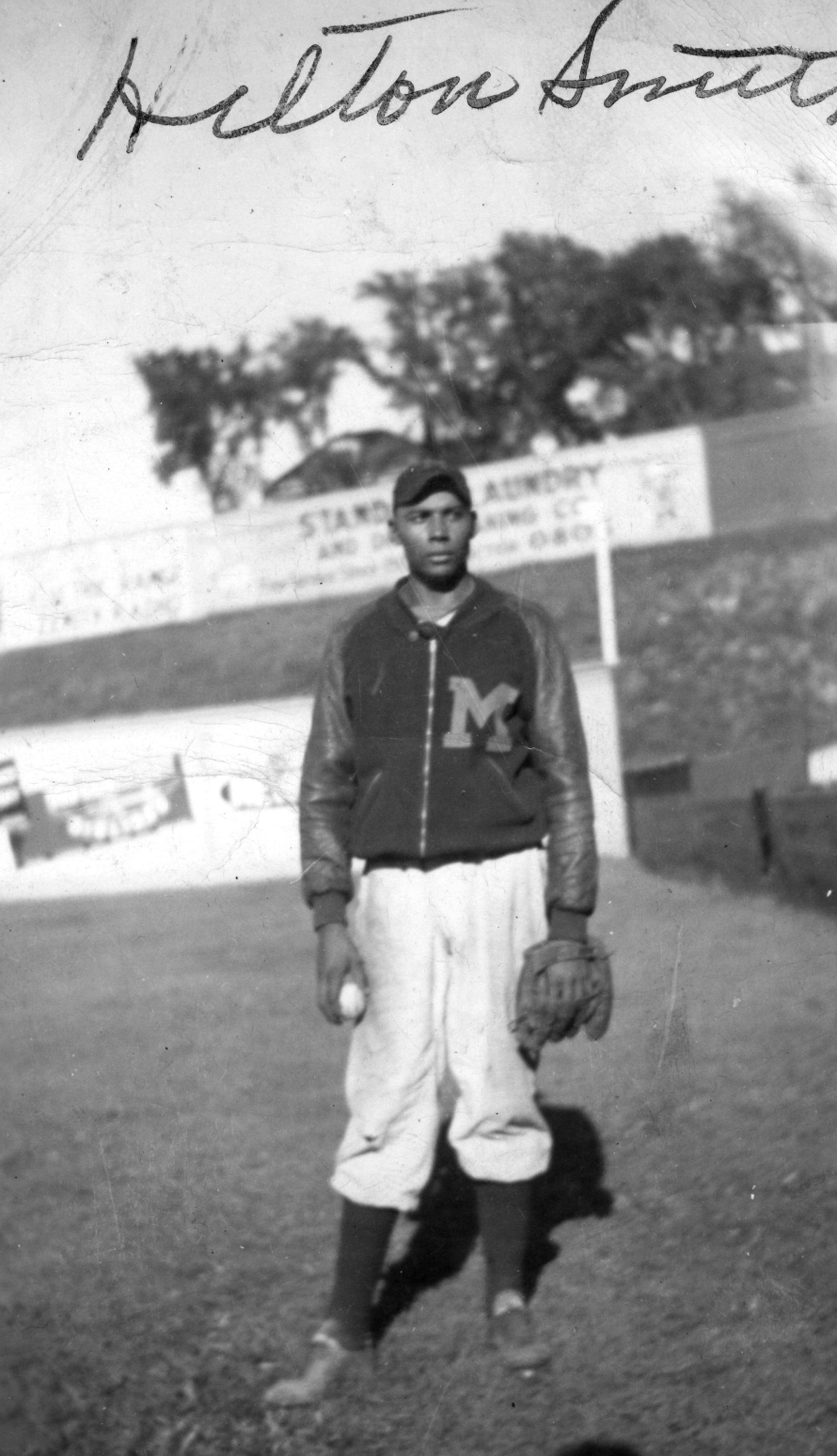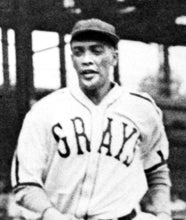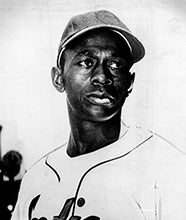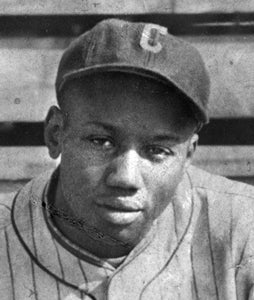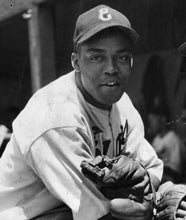- Home
- Our Stories
- #Shortstops: Time in a Bottle
#Shortstops: Time in a Bottle
It’s a bottle label, slightly smaller than your everyday postcard, and made of the thinnest of paper.
But this fragile bit of ephemera has survived some eight decades to tell a story of one of the game’s great but oft-forgotten hurlers.
Thanks to a recent generous donation to the National Baseball Hall of Fame and Museum, the life of the talented right-handed pitcher, Raymond Brown, can be celebrated. Because of his skin color, though, he didn’t have the chance to showcase his skills in the major leagues. Brown instead made his name in the Negro Leagues, where he starred with the legendary Homestead Grays and ultimately was elected to the Hall of Fame in 2006.
In July 2018, New Jersey’s Raul Ramos donated to the Museum a Don Q Rum label, approximately 4 ¾ inches high and 3 ½ inches wide, featuring Brown.
The front of the circa 1939-42 label, though damaged, celebrates in vivid colors the tropical home of the Puerto Rican liquor, distilled and bottled in Ponce; the back of the label has a black-and-white still image of Brown, caught at the end of his pitching motion, the words underneath his name reading, “Sensacional Pitcher del Team Ponce.”
“While I was doing research for my book on Pancho Coimbre (a Puerto Rican baseball legend) book, someone gave me a few of these labels,” Ramos wrote in a recent email, explaining that the labels he’s seen are from Latin and black ballplayers who spent the winter playing in Puerto Rico. “Raymond Brown is the only Hall of Fame player in the bunch. I thought Cooperstown was a good home for it.
“Puerto Rican baseball mementos are scarce and the majority of the remaining ones are in personal collections. To have donated the label to the Museum was an easy choice.”
Commenting on this unique donation, Hall of Fame Librarian Jim Gates added, “The donation of the Raymond Brown image from the rum bottle label is noteworthy not only because of the rarity of Brown images that exist, but also because it’s a minor miracle that labels like these survived. Most were undoubtedly tossed away with the bottle.”
Brown, elected to the National Baseball Hall of Fame in 2006, spent six winters playing in Puerto Rico between 1938 and ’47, spending time on the diamond with teams in San Juan, Santurce and Ponce. During his career he also played in Mexico, Cuba and Venezuela.
The Ohio native, born Feb. 23, 1908, began his Negro League career with short stints with the Indianapolis ABCs and the Detroit Wolves in the early 1930s, then joined up with the powerhouse Homestead Grays. Also a prolific switch-hitter, he batted in the middle of the order and played the outfield when not pitching.
“He was almost unbeatable,” said Hall of Famer Monte Irvin, the Negro League and big league star when recalling the pitching abilities of Brown. “Raymond Brown, not only was he a great pitcher, he could hit.”
In 1939, New York Giants manager Bill Terry – a longtime slugger and member of the Hall of Fame Class of 1954 – said: “I have seen many great Negro players, including Ray Brown of the Homestead Grays, who baffled the Giants in an exhibition game in Cuba a few years ago.”
On the mound, Brown was known for his pitching control and had an arsenal that included a sinker, slider, knuckleball and fastball. But his curveball was his best pitch.
This picture of Hall of Famer Ray Brown was found on a back of a label of Puerto Rican rum Don Q, produced in the late 1930s or early 1940s. It was one of only a few known photos of Brown, who was a dominant pitcher in the Negro Leagues and the Caribbean. (Milo Stewart Jr./National Baseball Hall of Fame and Museum)
His 14 seasons with the Grays came in the midst of a dynasty, with the team capturing eight pennants in a nine-year span. This period also included a one-hitter in the 1944 Negro League World Series and a perfect game in 1945. Brown is among the all-time Negro League leaders in wins, winning percentage and shutouts.
“He was somebody you had to take notice of,” said former Negro Leagues pitcher Wilmer Fields, a teammate of Brown's on the Grays. “As far as rating him No. 1, 2, 3 or 4, where you might rate him, I don't know. But he was a great pitcher.
“He was the top pitcher on our roster. You could find no greater competitor than he was, I'll tell you that. Yeah, he was something else.”
By the late 1930s, it was being reported in newspapers across the country that with Josh Gibson, Buck Leonard and Brown, the Grays had the three most dangerous players in the Negro National League.
It was also around this time that Jimmy Powers, the longtime sportswriter with the New York Daily News, proclaimed, “Raymond Brown of the Homestead Grays is the best pitcher in baseball today.”
In September 1938, Powers wrote in the Daily News that the Giants should add a number of Negro Leaguers to their roster to bolster their roster in a late-season push for the pennant. Among the seven players Powers named as possibilities were future Hall of Famers Brown, Gibson, Leonard and Ray Dandridge.
In a June 1942 article in the Washington Post, Grays catcher and longtime batterymate Gibson – elected to the Hall of Fame in 1972 – claimed that Brown’s calmness under fire and smooth delivery would ultimately help him defeat the more celebrated Satchel Paige.
“Ray will play along for the break, and when he gets his edge he’ll hold it,” Gibson said. “Satchel seldom loses a ballgame, but when he does lose one it’s usually these calm, steady boys who beat him.”
During his 1973 Hall of Fame induction speech, Irvin said, “I hope my induction will help ease the pain of all of those players who never got a chance to play in the majors.”
Asked years later whether he thought his induction did in fact help, Irvin believed it had.
“I know what Ted Williams had said when he was inducted,” Irvin said, “and I just want to reemphasize the fact that I wished major league fans had the opportunity to see so many great players like Buck Leonard, Josh Gibson, Willie Wells, Ray Dandridge, Raymond Brown and others right on down the line, play when they were in their prime.
“I got a chance to see them, play with them and play against them. I call them the ‘old masters.’ I’m just so happy they finally got a chance to receive some of the recognition that they deserve.”
Brown passed away in 1965 at the age of 56.
Bill Francis is the senior research and writing specialist at the National Baseball Hall of Fame and Museum

